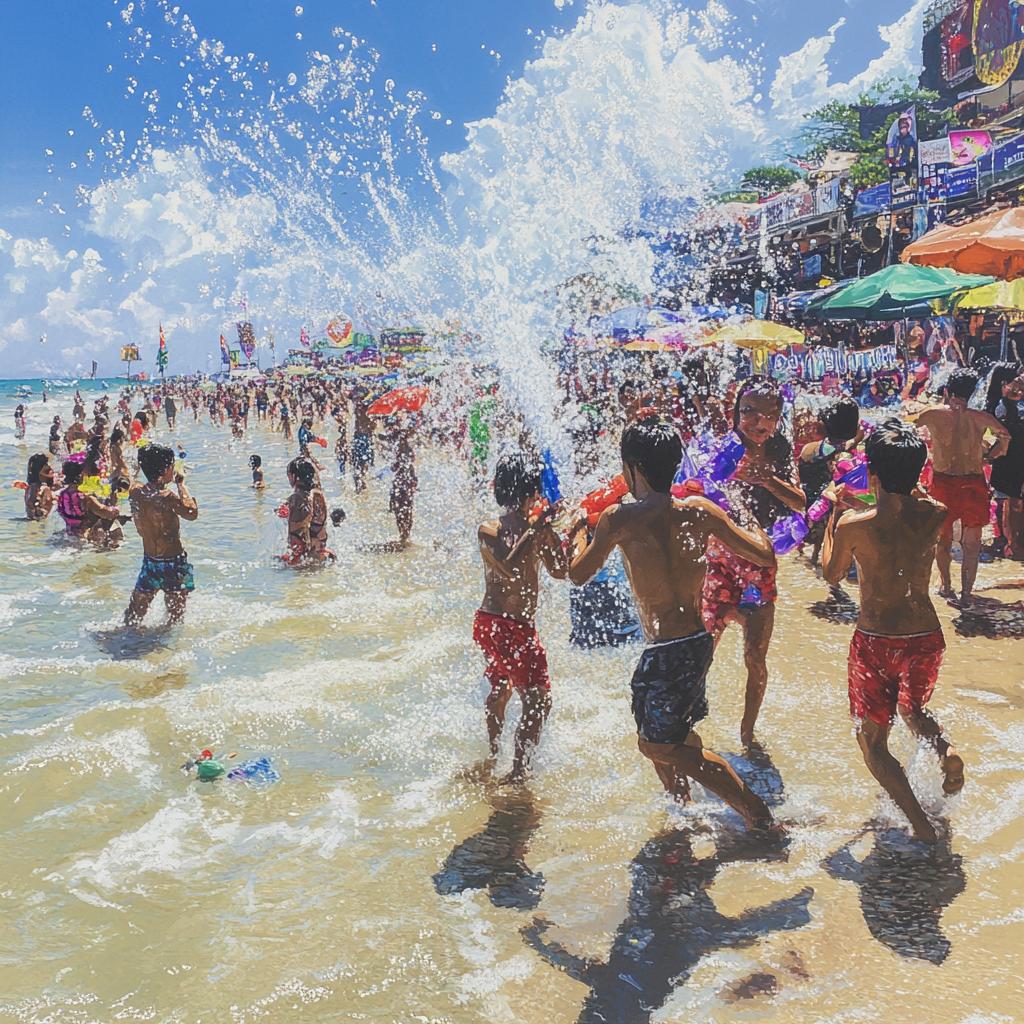As Thailand prepares for the vibrant and spirited Songkran Festival, the city of Pattaya has taken center stage, making quite a splash while other renowned tourist destinations find themselves struggling to match its pace. Amidst a persistent national decline in hotel bookings and a tough economic backdrop, Pattaya shines brighter than ever, spectacularly defying the odds and experiencing a significant rise in tourism activity.
While the broader picture for Thailand’s tourism landscape may seem a tad subdued, with global issues such as dwindling foreign spending and the impact of a recent earthquake casting shadows over bookings, Pattaya stands as a beacon of hope with its bustling tourism scene. The government has thrown its weight behind larger-than-life campaigns to promote Songkran, with ambitions to spur over 26.5 billion baht in expenditure. However, it’s worth noting that this financial boon isn’t evenly distributed across the terrain.
The Tourism Ministry has left no stone unturned in turning Songkran into a marquee event. Enthusiastic campaigns targeting popular provinces like Bangkok, Chiang Mai, Phuket, Khon Kaen, and Songkhla are set under the inspiring banner of “Refreshing Across the Land – Songkran 2025.” And while major events like Bangkok’s Maha Songkran World Water Festival are designed to pull in the crowds, the fiscal outcomes have been decidedly modest.
“Despite the grandeur of the festival, there’s gloom over hotel bookings in Chon Buri and Bangkok,” remarked Tienprasith Chaipattranan, President of the Thai Hotels Association. As of April 3, Chon Buri’s bookings nosedived by 67%, and Bangkok noted a similar downturn of 31%. This decline is partly attributable to the sluggish revival of the Chinese tourism sector—historically a major participant in Songkran festivities.
Conversely, Pattaya couldn’t be more different. Hotel occupancy near Pattaya Beach is nearly maxed out, especially in the 4-star-and-above segment, as an astonishing 400,000 to 500,000 visitors are expected daily throughout the Songkran merriment. This surge is poised to generate billions in economic ripples, invigorated further by grand-scale celebrations like Wan Lai Naklua and Wan Lai Pattaya.
Thanet Supornsahasrangsi, President of the Association of Chon Buri Tourism Federation, attributes Pattaya’s allure to its captivating cultural experiences and water fiestas, which have struck a chord with both domestic and international tourists, particularly from Malaysia.
Meanwhile, Southern Thailand isn’t trailing far behind. Hat Yai anticipates a joyous influx of at least 60,000 Malaysian visitors, contributing to more than 1 billion baht in local economic activity. Additionally, Phuket is readying itself for another banner festival season, boasting 80.9% hotel bookings and anticipating 289,609 visitor arrivals, translating into over 8.29 billion baht flowing through the local economy.
However, Chiang Mai presents a contrasting picture. This year, the city finds its Songkran aspirations considerably quieted; hotel occupancy rates have alarmingly dropped, with figures as low as 45–50%. The lingering absence of Chinese tourists coupled with the earthquake’s aftereffects have largely influenced this downturn, as noted by Travel and Tour World.
Amidst all these ebbing and flowing tides, Pattaya proves to be a resilient force, offering a mesmerizing blend of celebration, culture, and prosperity, guaranteeing that it remains an indomitable contender in Thailand’s tourism scene this Songkran season.


















Pattaya always bounces back no matter the crisis. It’s like nothing can stop the party!
True, but the focus on Pattaya alone can be bad. What about places like Chiang Mai?
Chiang Mai definitely needs more support. The earthquake didn’t help either.
But Pattaya’s strategy works! Other places should learn from it.
I never understood why Pattaya is so popular. It’s overcrowded and overrated.
What about the environment? So many tourists can’t be good for Pattaya’s beaches.
Exactly! Economic growth shouldn’t come at the cost of natural beauty. Tourism can be sustainable!
Sadly, money often wins over environmental concerns. 😔
Agreed. They need stricter regulations to protect those beaches.
How is Pattaya managing to attract so many tourists while places like Bangkok are struggling?
It’s all about the marketing. Pattaya’s campaigns target both domestic and foreign tourists effectively.
Bangkok needs to innovate its attractions. It’s not enough to rely on its name.
Marketing is key, but there’s also something special about Pattaya’s events.
Pattaya’s success is all about timing. They know when to push for more tourists.
I feel bad for Chiang Mai though. They used to be the hub for Songkran.
Yes, I think it’s so unfortunate. Hopefully, they’ll bounce back next year.
Maybe Chiang Mai’s decline is a temporary thing. They’ll probably catch up soon enough.
This is a temporary bump for Pattaya. Other destinations will reclaim their glory.
It’s surprising they still get many tourists from countries like Malaysia despite the global issues.
Malaysia’s proximity plays a big role, and they love celebrating Songkran too!
Convenience surely helps. Culture exchange is strong in ASEAN countries.
True. It would be great to see more diversity in tourism sources.
I think they should invest more in infrastructure to handle the tourist influx better.
Songkran in Phuket is underrated! Every year is amazing there too.
The figures seem inflated. No way Pattaya is doing that well amidst a global downturn.
Living in Thailand, I see the divide clearly. Pattaya is way more aggressive in attracting tourists.
Aggressiveness pays off in tourism, it seems. Others need to up their game.
Absolutely. It’s a lesson for other cities in balancing tradition with modern tourism tactics.
The competition among Thailand’s cities is unhealthy. It should be about promoting the country as a whole.
Seeing Pattaya flourish gives hope, but I hope this success translates to other destinations too.
Songkran is powerful enough to make waves. Just wish it helped other destinations as well.
Are Pattaya’s celebrations even staying true to tradition? Or is it just commercialized now?